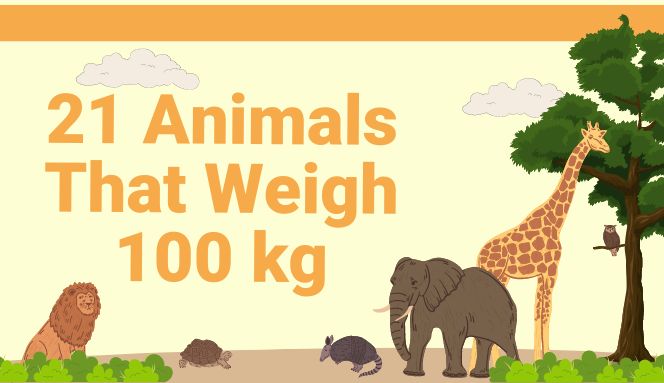When it comes to the animal kingdom, size matters. There are certain animals that weigh 100 kilograms or more, and they are truly impressive creatures. Some of these animals are herbivores, while others are carnivores. Here is a list of five animals that weigh 100 kilograms or more.
| 1. Bengal Tiger | 12. Lioness |
| 2. Grizzly Bear | 13. Jaguar |
| 3. African Elephant (Calf) | 14. Snow Leopard |
| 4. Dolphin | 15. Chimpanzee |
| 5. Killer Whale (Orca) | 16. Orangutan |
| 6. Beluga Whale | 17. Gorilla |
| 7. Emu | 18. Red Kangaroo |
| 8. Ostrich | 19. South American Fur Seal |
| 9. Andean Condor | 20. Spectacled Bear or Andean Bears |
| 10. Saltwater Crocodile (Juvenile) | 21. Giant Panda |
| 11. Green Anaconda | 22. Topi |
How Heavy is 100 Kilogram?
A 100-kilogram object has a mass of 220.46 pounds. This is equivalent to the weight of two large adults, or an average-sized adult and a large child. It is also equivalent to the weight of five 10-pound bowling balls, or 10 five-pound bags of sugar.
What Weigh 100 Kilogram?
A 100 kg object is quite heavy and can refer to a variety of items. Depending on the context, it could refer to a person, an animal, or any other type of object.
Land Animals That Weigh 100 Kilogram
When it comes to the animal kingdom, there are some that are small enough to fit in the palm of your hand and others that weigh more than a car. For those who are interested in the latter category, we’ve put together a list of land animals that weigh 100 kilograms.
Bengal Tiger
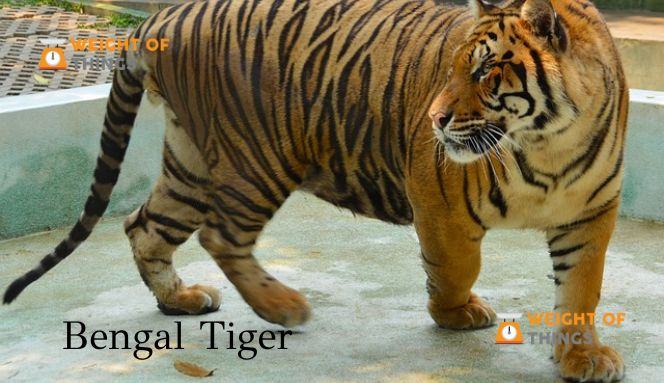
The Bengal Tiger is one of the largest carnivorous cats in the world. This majestic animal is native to the Indian subcontinent, and it can weigh up to 100 kg – making it one of the heaviest animals on earth. Its beautiful orange coat with black stripes is a defining feature that sets it apart from other felines.
These powerful creatures primarily hunt deer, wild boars, and water buffalo for their prey. They are known for their incredible strength, agility, and speed when hunting down their prey. It’s fascinating to watch them chase after their target in a burst of energy before pouncing and taking them down with ease.
Sadly, these magnificent animals are endangered due to poaching and habitat loss caused by human activity. Conservation efforts have been put in place to protect these tigers from extinction, but much work still needs to be done.
Grizzly Bear
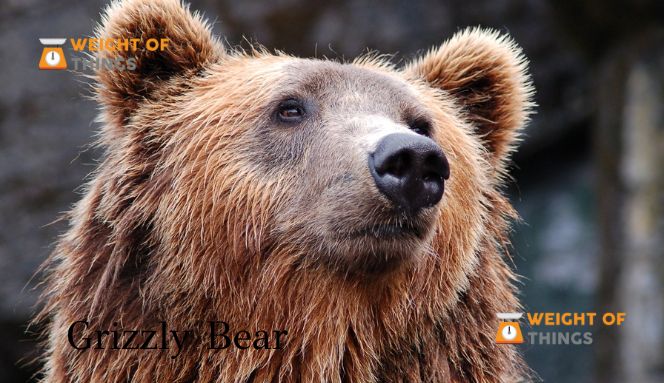
The Grizzly Bear is a powerful mammal that can be found in North America. With the ability to weigh up to 1000 kg, they are considered one of the largest land predators in the world. These bears are known for their impressive strength and resilience, making them an apex predator in their natural habitat.
Despite their size, not all Grizzly Bears weigh up to 1000 kg. In fact, some individuals may only weigh around 100 kg. The weight of each bear is determined by various factors such as genetics, gender, age, and diet.
However, regardless of size or weight, all Grizzly Bears possess incredible hunting skills and have adapted well to their environment by developing thick fur coats that protect them from harsh weather conditions.
African Elephant (Calf)
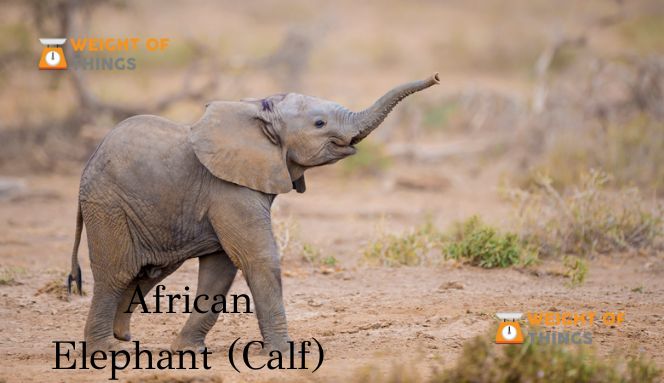
African elephants are the largest land animals on Earth. While adult elephants can weigh several tons, a calf typically weighs around 100 kg at birth. This means that an elephant calf is already significantly larger than most other mammals at birth. The mother elephant carries her unborn baby for 22 months, which is longer than any other mammal.
At birth, elephant calves are able to stand and walk within an hour of being born. They depend entirely on their mother’s milk for the first few months of their life, during which they grow rapidly and gain weight quickly. By age one, an African elephant calf can weigh up to 250-300 kg.
Despite their size at birth, young elephants have a lot to learn from their mothers and the rest of their herd. Elephants are highly social animals and live in complex societies with strict hierarchies and communication systems.
Spectacled Bear or Andean Bears
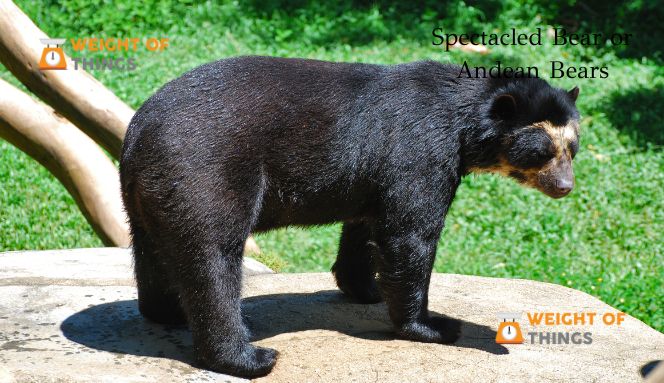
Spectacled Bears, also known as Andean Bears, are the only bear species found in South America. These bears can weigh up to 100 kilograms and are smaller than their North American counterparts. They are named after the white or light fur markings around their eyes that resemble spectacles.
These bears primarily inhabit the Andean mountains in South America and have adapted to live in high altitudes of up to 4,800 meters. Their diet consists of both plants and animals, including fruits, insects, small mammals, and occasionally larger prey like deer or llamas.
Unfortunately, due to habitat loss and hunting for their fur and meat, Spectacled Bear populations have been declining rapidly over the years. Conservation efforts have been put in place to protect these fascinating creatures so that they may continue thriving in their natural habitats for future generations to enjoy.
Giant Panda
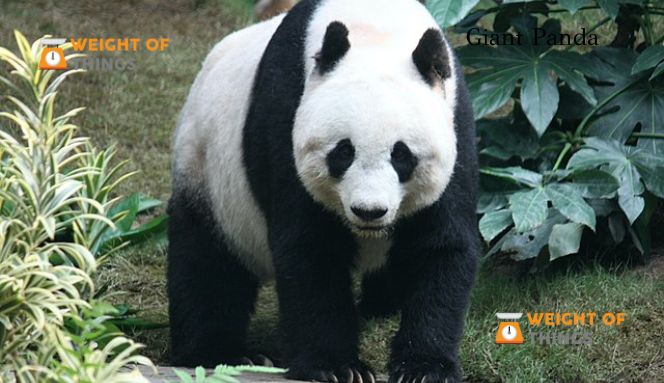
The giant panda is one of the most iconic animals in China and around the world. It’s a fascinating creature that belongs to the bear family and is known for its distinctive black-and-white fur coat. The giant panda is also a heavyweight, weighing over 100 kilograms on average. This makes it one of the largest animals on earth, but surprisingly, they survive mainly on bamboo.
Giant pandas are native to central China, where they live in mountainous forests with dense bamboo groves. They have adapted to their environment by developing strong jaws and teeth that allow them to chew through tough bamboo stems. Despite their size, pandas are agile climbers and spend much of their time in trees where they can rest or search for food.
Due to habitat loss and poaching, giant pandas were once an endangered species. However, conservation efforts over the past few decades have helped increase their numbers significantly.
Topi
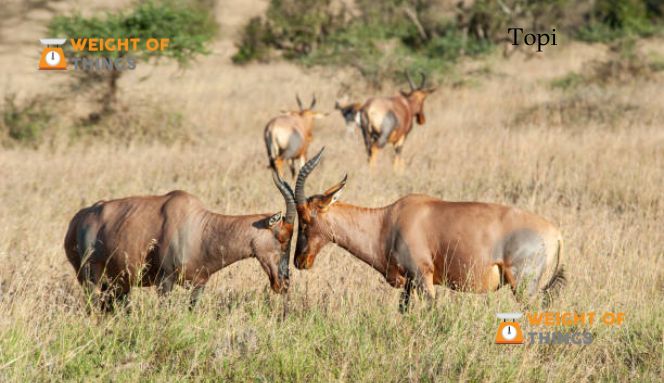
Topi is majestic antelopes that fall under the family of Bovidae, which includes buffalo, sheep, and goats. They are native to the African savannah and are known for their slender body build with a reddish-brown coat and long horns in males.
When it comes to their weight, topi is one of the heaviest antelopes weighing up to 150 kilograms (330 pounds) in males and up to 120 kilograms (265 pounds) in females. Their size makes them an easy target for predators such as lions and hyenas; hence they have adapted by living in large herds of up to 50 individuals.
Despite their weight, topi are incredibly agile animals capable of running at speeds of up to 70 kilometers per hour. They mainly feed on grasses found on the savannah plains.
Check Out: 20 Common Things That Weigh One Kilogram (kg)
Check Out: 20 Common Things That Weigh One Ton
Check Out: Best Free Mass Converter Tool
Marine Animals That Weigh 100 Kilogram
Marine animals come in all shapes and sizes, with some weighing as much as a car! Here we’ve compiled a list of the biggest marine animals that weigh 100 kilograms or more. These incredible creatures range from whales to sea lions, and each one is an awe-inspiring sight.
Dolphin
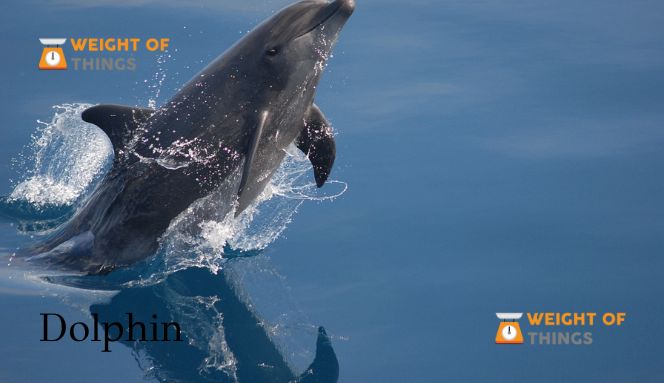
Dolphins are incredibly intelligent marine mammals that have intrigued humans for centuries. They are known for their playful behavior, as well as their ability to learn and communicate with one another. Dolphins are found in oceans and rivers all over the world, and there are 43 different species of dolphins that have been identified.
Some larger dolphin species, such as the common dolphin, can weigh up to 100 kilograms or more. These majestic animals possess a sleek body design that is perfect for swimming through water at high speeds. Their streamlined shape also helps them to conserve energy when they swim long distances without rest. Another interesting fact about dolphins is that they can hold their breath for several minutes while diving deep beneath the ocean’s surface in search of food or mates.
Despite being highly intelligent creatures with complex social structures, dolphins face many threats in today’s world.
Killer Whale (Orca)
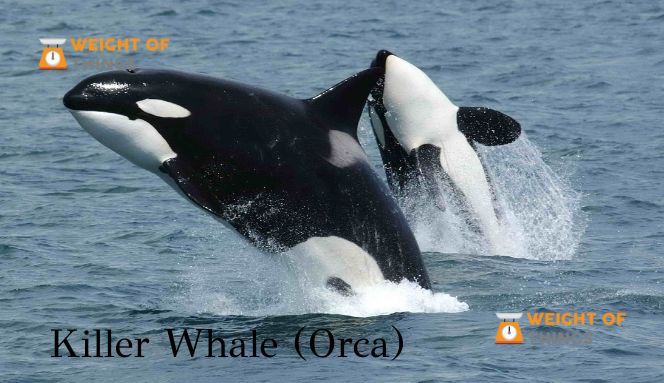
The Killer Whale, also known as the Orca, is a highly intelligent marine mammal that has captured the fascination of many people around the world. These magnificent creatures are found in all oceans and can grow up to 10 meters long. Adult males can weigh up to 6 tons, while adult females usually weigh slightly less at around 3-4 tons. However, juveniles and smaller individuals may only weigh around 100 kg.
Despite their name, Killer Whales are not actually whales but are part of the dolphin family. They have a unique black-and-white coloration that helps them blend into their surroundings while hunting for prey such as fish, squid, seals, and even other whales. Researchers have discovered that each pod of Killer Whales has its own dialect or language which they use to communicate with one another.
Beluga Whale
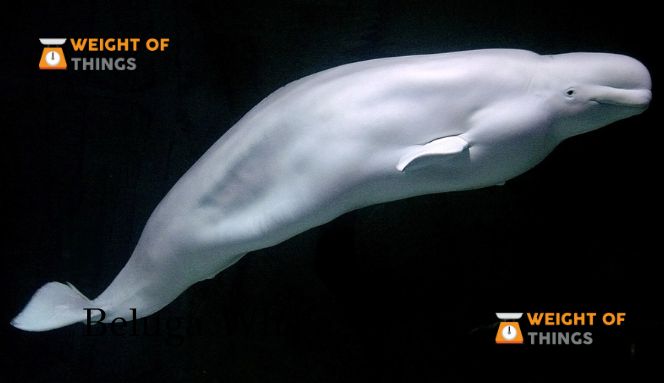
The Beluga Whale is a fascinating marine mammal found in the Arctic and sub-Arctic regions. It is easily recognizable by its unique white color, which sets it apart from other whale species. These social animals live in groups called pods, consisting of anywhere between two to twenty members. They are known for their playful and curious nature, often approaching boats and divers.
Beluga Whales have a robust body structure that allows them to weigh up to 1,600 kg. However, newborn calves weigh only around 100 kg at birth, making them one of the few animals that weigh this much at such an early age.
Their diet consists mainly of fish, crustaceans, and squid that they find in shallow waters near the shorelines. They have flexible neck that helps them maneuver through narrow channels and under ice floes while hunting for prey.
South American Fur Seal
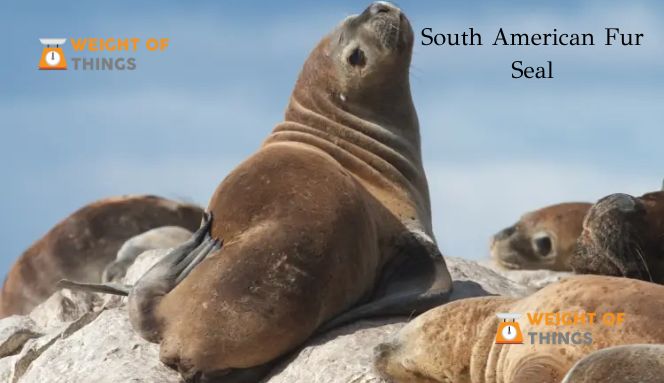
The South American Fur Seal is a marine mammal that belongs to the family Otariidae. They are found along the coasts of South America and are known for their thick fur, which was once highly prized by hunters. Adult males can weigh up to 300 kilograms while females can reach up to 100 kilograms.
These animals have streamlined bodies with webbed feet that make them excellent swimmers, allowing them to dive deep into the ocean in search of prey. Their diet consists mainly of fish, squid, and octopus. The South American Fur Seal is also an important predator in its ecosystem as it helps regulate populations of its prey.
Despite being a protected species under international law, these seals face threats from habitat loss due to coastal development and pollution. Conservation efforts have helped stabilize their populations in some areas but more needs to be done to ensure their continued survival in the wild.
Check Out: 11 Common Things That Weigh 20 Kilograms
Birds Animals That Weigh 100 Kilogram
Birds are known for their grace and beauty, but did you know that there are some birds out there that weigh as much as a small car? These massive avian creatures can tip the scales at an astonishing 100 kilograms or more. Today, we’ve compiled a list of the 100-kilogram bird’s animals.
Emu
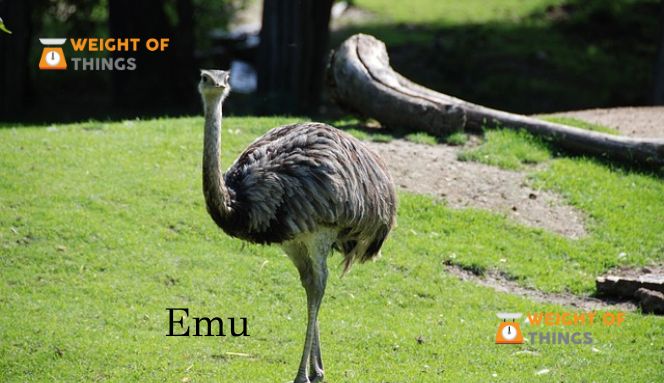
Emus are fascinating creatures that have captured the attention of bird enthusiasts and animal lovers alike. These flightless birds are native to Australia and are the second-largest in the world, with some individuals weighing up to 60 kg. While this may seem like a hefty weight for a bird, emus are actually quite adept at moving around on their two legs.
Despite not being able to fly, emus can run at speeds of up to 50 km/hour and travel long distances without rest. They have powerful legs that allow them to jump over obstacles and swim across rivers if necessary. Interestingly enough, some larger emus have been known to weigh upwards of 100 kg! Despite their large size, they are still agile creatures that can maneuver through dense vegetation with ease.
Ostrich
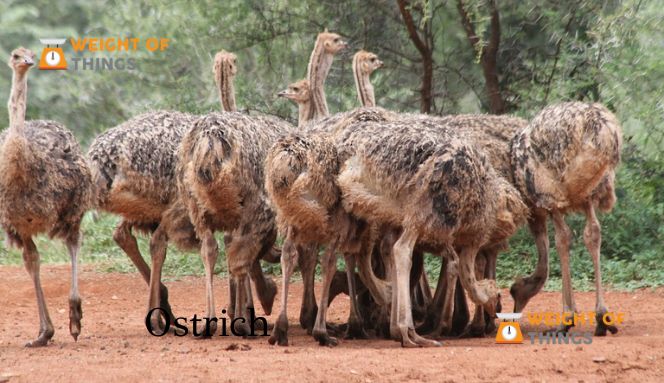
The ostrich is the largest living bird on our planet, and it can be found in Africa. The average adult male ostrich can weigh up to 160 kg, while the females are smaller in size and only weigh around 100 kg. These birds are known for their long necks, powerful legs, and distinctive feathers.
While the ostrich may not be able to fly like other birds, they make up for it with their running abilities. They have been known to run at speeds of up to 70 km/hour, making them one of the fastest animals on land. Their large size and speed make them formidable creature that is best left alone in the wild.
Ostriches have long been hunted for their meat and feathers, but conservation efforts have helped protect these magnificent birds from extinction.
Andean Condor
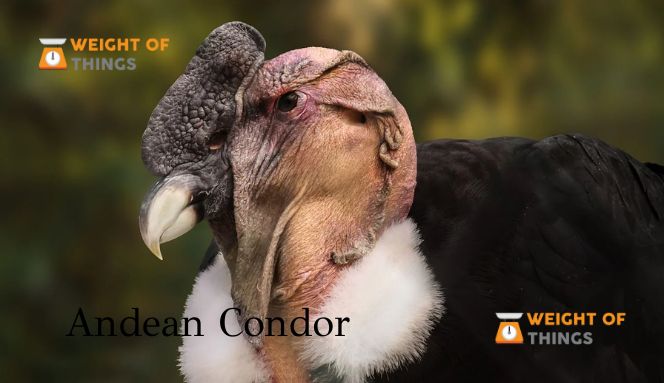
The Andean Condor is a majestic bird that can be found in the Andes Mountains of South America. This large bird is known for its impressive size and wingspan, which can reach up to 3 meters in length. Adult Andean Condors are one of the heaviest flying birds in the world and can weigh around 100 kg.
Despite their size, these birds are remarkable flyers and often soar through the mountains with ease. Their broad wings allow them to catch thermals and glide effortlessly through the air for hours at a time. They are also known for their keen eyesight, which helps them spot carrion from long distances away.
Today, Andean Condors face many threats including habitat loss, hunting, and poisoning from pesticides used by farmers. Conservation efforts are underway to protect these magnificent creatures and ensure that they continue to thrive in their natural habitat.
Reptiles and Amphibians Animals That Weigh 100 Kilogram
Reptiles and amphibians are often associated with being small in size, but there are some species that can reach an astonishing weight of 100 kilograms. These animals have adapted to their environments in unique ways, making them fascinating creatures to study.
Saltwater Crocodile (Juvenile)
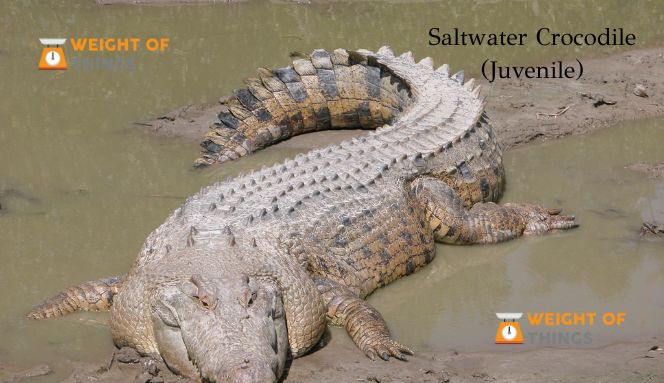
Saltwater crocodiles are the largest reptiles in the world, growing to lengths of up to 6 meters and weighing over a ton. These massive creatures can be found throughout Southeast Asia and Northern Australia, where they are known for their aggressive nature and fearsome reputation. Despite their size and strength, saltwater crocodiles start out as tiny hatchlings that weigh just a few grams.
Juvenile saltwater crocodiles typically weigh around 100 kg when they reach the sub-adult stage at around 8 years old.
Green Anaconda
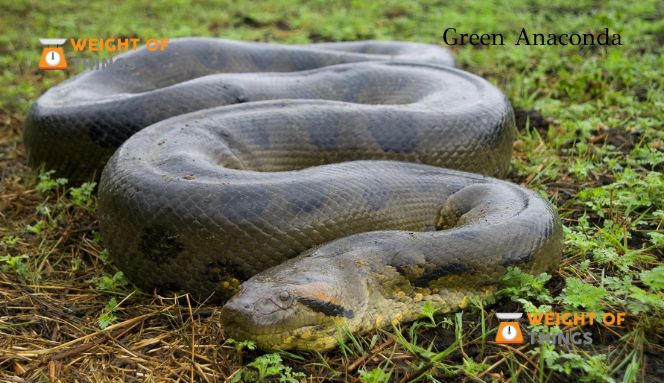
The Green Anaconda is one of the largest snake species in the world, and it can be found in South America. Although females are larger than males, both sexes can weigh up to 250 kg or more. Smaller individuals and males typically weigh around 100 kg, which is still an impressive size for a snake.
These massive snakes are known for their incredible strength and ability to constrict their prey before swallowing them whole. They primarily hunt large mammals such as deer, pigs, and even jaguars. Because of their size and power, Green Anacondas have no natural predators except for humans who hunt them for their skin and meat.
Despite being formidable creatures that can live up to 30 years in the wild, Green Anacondas are not aggressive toward humans unless they feel threatened or provoked. These majestic creatures play an important role in maintaining balance within their ecosystem as apex predators.
Big Cats That Weigh 100 Kilogram
Big cats are some of the most fearsome predators in the animal kingdom, and their size often plays a major role in their ability to hunt and survive. Among big cats that weigh 100 kilograms, there are several notable species that stand out for their strength, agility, and raw power.
Lioness
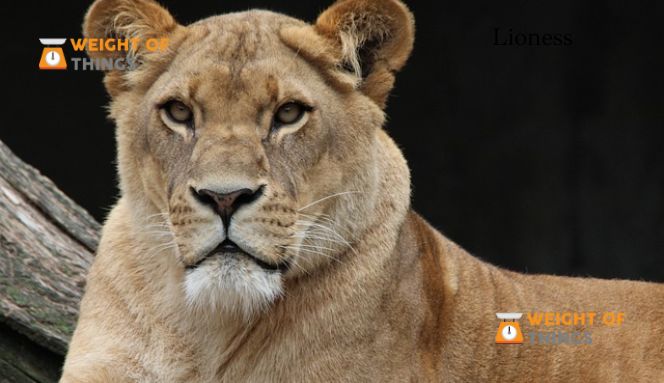
Lionesses are female lions in pride, and they play an essential role in the survival of their group. While adult male lions can weigh up to 190 kg, lionesses typically weigh around 100 kg. These majestic creatures are highly social animals that live in groups called pride. In a typical pride, there can be anywhere from five to thirty individuals.
Lionesses are known for their incredible hunting skills, which they use to provide food for their pride. They work together as a team to take down large prey such as zebras and wildebeests. Although males may occasionally join the hunt, it is primarily the lionesses who do the bulk of the work. Their teamwork and coordination are essential for successful hunts.
In addition to hunting, lionesses also serve as caretakers for their young cubs.
Jaguar
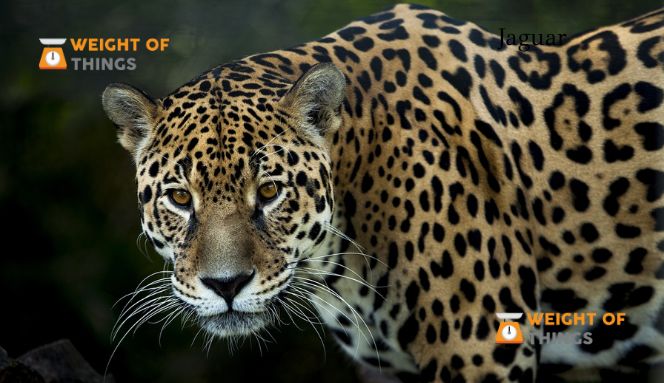
Jaguars are powerful and solitary big cats found in the Americas, renowned for their stunning beauty and muscular build. They are the third-largest cat species in the world, behind tigers and lions, with adult males weighing up to 100 kilograms. Females are generally smaller than males, with an average weight of around 60 kilograms.
Jaguars have a distinctive golden coats covered in black spots that form unique patterns. Although their large size may make them appear slow-moving, they are actually incredibly agile animals capable of running at speeds of up to 80 kilometers per hour. Jaguars can also swim exceptionally well and enjoy hunting fish as well as terrestrial prey such as deer and peccaries.
Snow Leopard
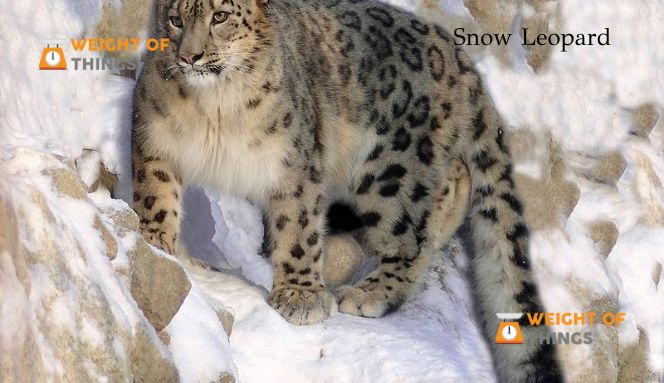
The Snow Leopard is one of the most beautiful and mysterious big cats on earth. Known for its stunning white fur, this elusive animal calls the mountainous regions of Central Asia home. While they are typically smaller than other big cats, with males weighing in at around 75 kg and females at around 55 kg, some larger individuals may reach around 100 kg.
While the Snow Leopard is a skilled hunter that can take down prey much larger than itself, it is also known for being incredibly reclusive. They are so rare to spot that even experienced wildlife photographers often go months without glimpsing one in the wild.
Scientists believe there may be fewer than 7,000 Snow Leopards left in their natural habitat due to habitat loss and poaching threats. Despite their elusiveness, the Snow Leopard has become an icon of conservation efforts worldwide.
Primates Animals That Weigh 100 Kilogram
Primates are a diverse group of animals that vary greatly in size, behavior, and habitat. While most primates are relatively small, weighing between 1 and 10 kilograms, there are a few species that can reach weights of up to 100 kilograms. These include the gorilla, orangutan, and chimpanzee.
Chimpanzee
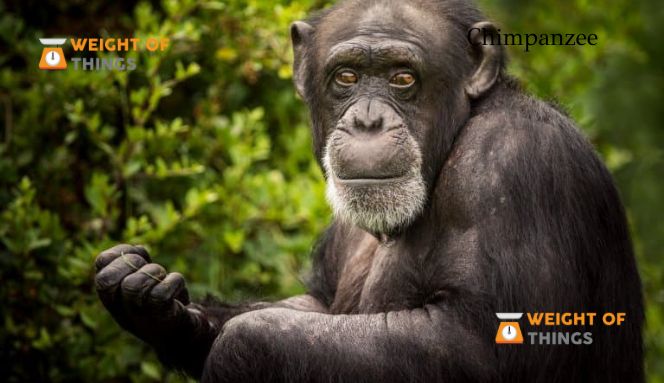
Chimpanzees are among the most intelligent primates in the world. They are found in the lush forests of Central and West Africa, where they live in large social groups called communities. These communities consist of up to 100 individuals, including males, females, and their offspring.
The average weight of an adult chimpanzee is around 50 kg, but some larger males may reach up to 100 kg. Chimpanzees are also known for their remarkable strength – pound for pound, they are stronger than humans. They use this strength to climb trees and swing from branch to branch as they move through the forest canopy.
Despite their impressive physical abilities, chimpanzees’ real intelligence lies in their cognitive skills. Studies have shown that they have a sophisticated understanding of basic mathematics, tool use, problem-solving, and even language.
Orangutan
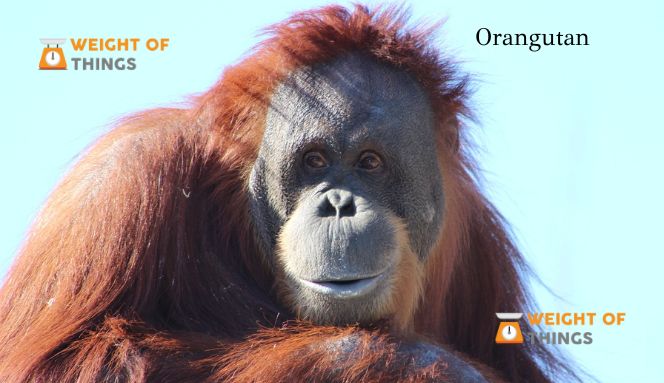
Orangutans are fascinating creatures that belong to the primate family. They are native to the rainforests of Borneo and Sumatra, where they spend most of their lives in trees. These large primates are known for their distinctive red fur and long arms, which enable them to swing from branch to branch with ease.
One interesting fact about orangutans is that adult males can weigh up to 100 kg, while females are typically smaller. This makes them one of the largest animals in their habitat. Despite their size, however, these primates are often shy and reclusive creatures that prefer solitude over social interaction.
The diet of orangutans consists mainly of fruit and leaves, although they have been known to eat insects and small animals on occasion. They are also highly intelligent animals that possess a remarkable ability for problem-solving and tool use.
Gorilla

Gorillas are among the most fascinating creatures on this planet. They are the largest living primates, with adult males, known as silverbacks, weighing up to 200 kg while females weigh around 100 kg. These majestic animals call the dense forests of central and western Africa home.
Despite their enormous size, gorillas are peaceful animals that live in family groups led by a dominant male silverback. They spend most of their time foraging for food and resting in nests they construct from branches and leaves. Gorillas primarily feed on leaves, fruits, and stems but have been known to eat insects and small animals too.
These gentle giants have always fascinated humans due to their physical strength and unique behavior patterns. However, despite being one of our closest genetic relatives, gorilla populations face numerous threats such as habitat destruction and poaching.
Marsupials Animals That Weigh 100 Kilogram
Red Kangaroo
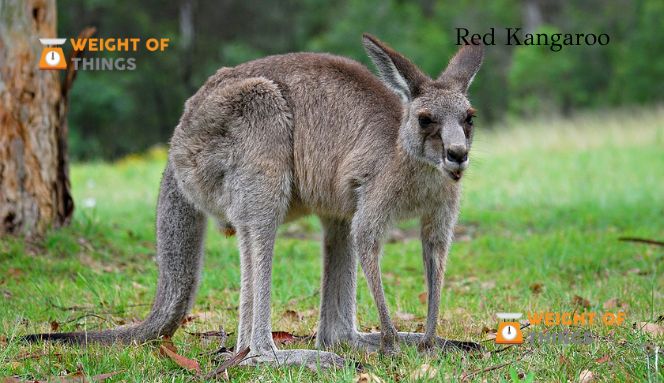
The Red Kangaroo (Macropus rufus) is one of the most iconic animals in Australia. It is not only the largest marsupial but also the largest kangaroo species known to man. These creatures are easily recognized by their reddish-brown fur and powerful hind legs which allow them to hop across vast distances in a matter of seconds.
Adult males are especially notable for their size, with some weighing up to 90 kilograms on average. However, there have been reports of larger males reaching around 100 kilograms. Females are generally smaller than males, weighing between 25 and 40 kilograms on average.
Despite their size, Red Kangaroos can travel at speeds of up to 60 kilometers per hour and cover over nine meters in a single hop. They are also capable swimmers and can leap great heights when required.
FAQs – Animals That Weigh 100 Kilogram
Which animal weighs 100 kg?
There are several animals that can weigh up to 100 kg. Some of the larger land mammals include African elephants, rhinoceroses, and hippopotamuses. All three of these animals can reach weights of up to 4 tons (4000 kg), with the average weight for an adult elephant being around 5,400 lbs (2,450 kg).
What animal weighs 110?
The answer to this question depends on the type of animal you are looking for. If you are looking for a mammal, the 110-pound mark is reached by several species. For example, the average adult red kangaroo weighs around 90-110 pounds. Similarly, an adult female American black bear can weigh up to 110 pounds.
What animal is 90 kg?
It depends on the species, but there are a number of animals that can weigh up to 90 kg or more. Elephants, for example, can weigh anywhere from 3,000 to 6,000 kg. Rhinoceroses can range from 800-3,600 kg. Hippopotamuses typically weigh between 1,500-4,500 kg. Giraffes usually weigh between 900-1,400 kg. And some large cats such as tigers and lions can reach weights of up to 300-400 kg.
Which animal weighs 120 kg?
A variety of animals can weigh up to 120 kg. The African elephant is the largest land animal and can weigh up to 6,000 kg, but a fully grown adult male typically weighs between 4,000 and 6,000 kg. The hippopotamus is the second-largest land mammal and can reach weights of up to 3,500 kg. Other large mammals that may reach weights of 120 kg include rhinoceroses, giraffes, and bison.
Final Words
In conclusion, the animal kingdom is full of fascinating creatures that come in all shapes and sizes. From land to sea, we have explored 22 animals that weigh 100 kilograms or more. Each one has its unique characteristics and plays a crucial role in their respective ecosystems. It’s essential to appreciate and respect these animals as they are an intricate part of our world.

